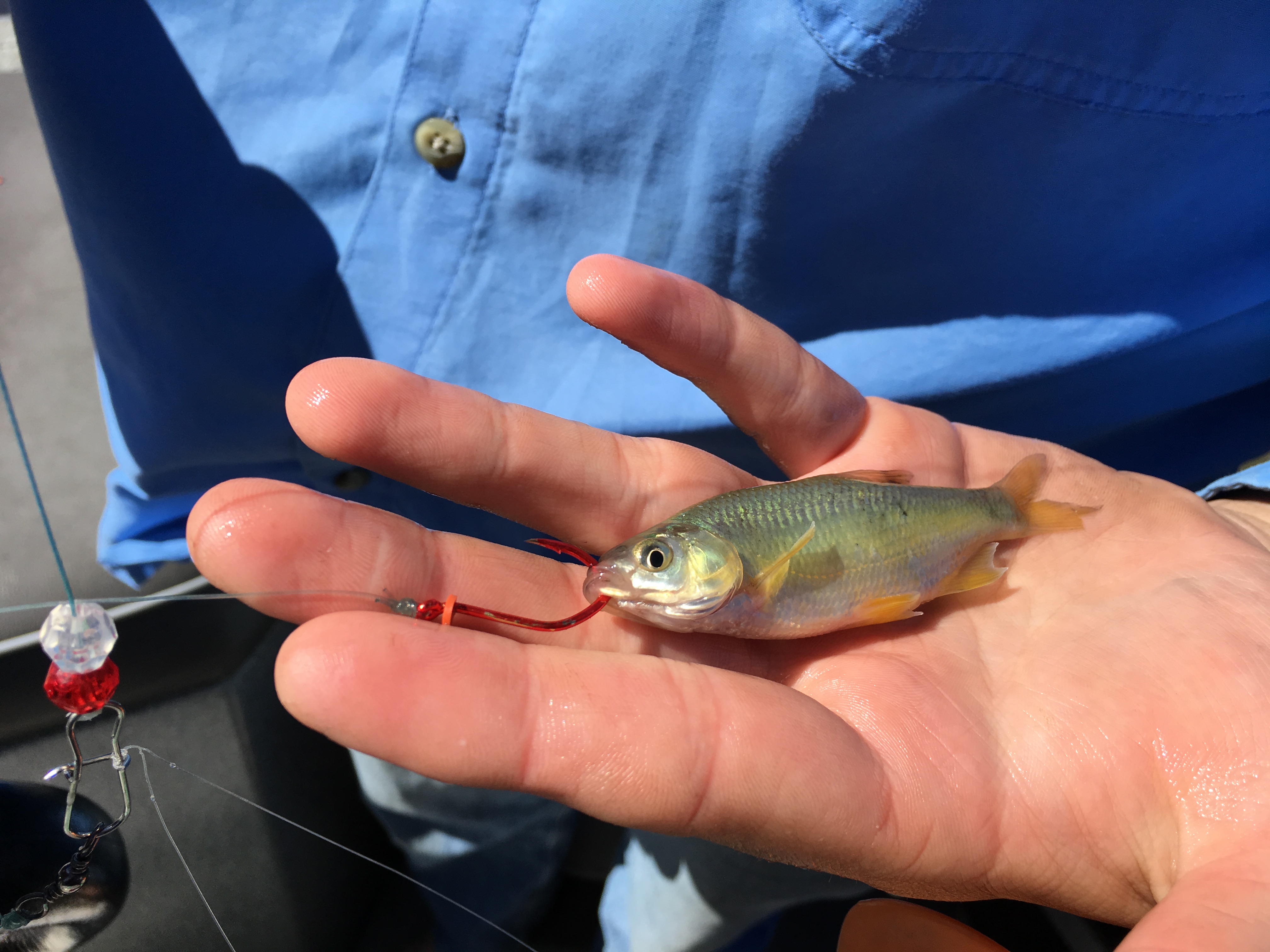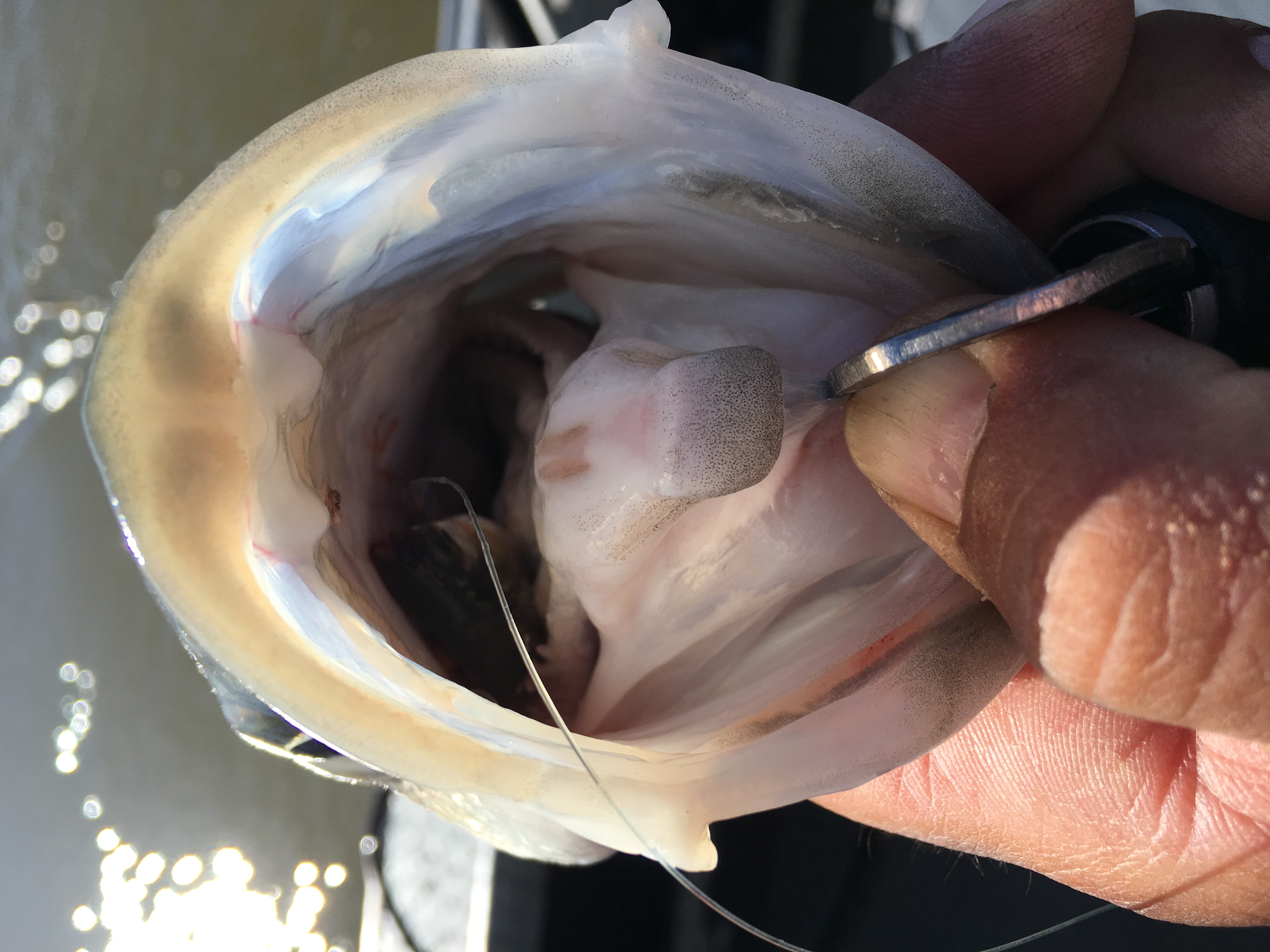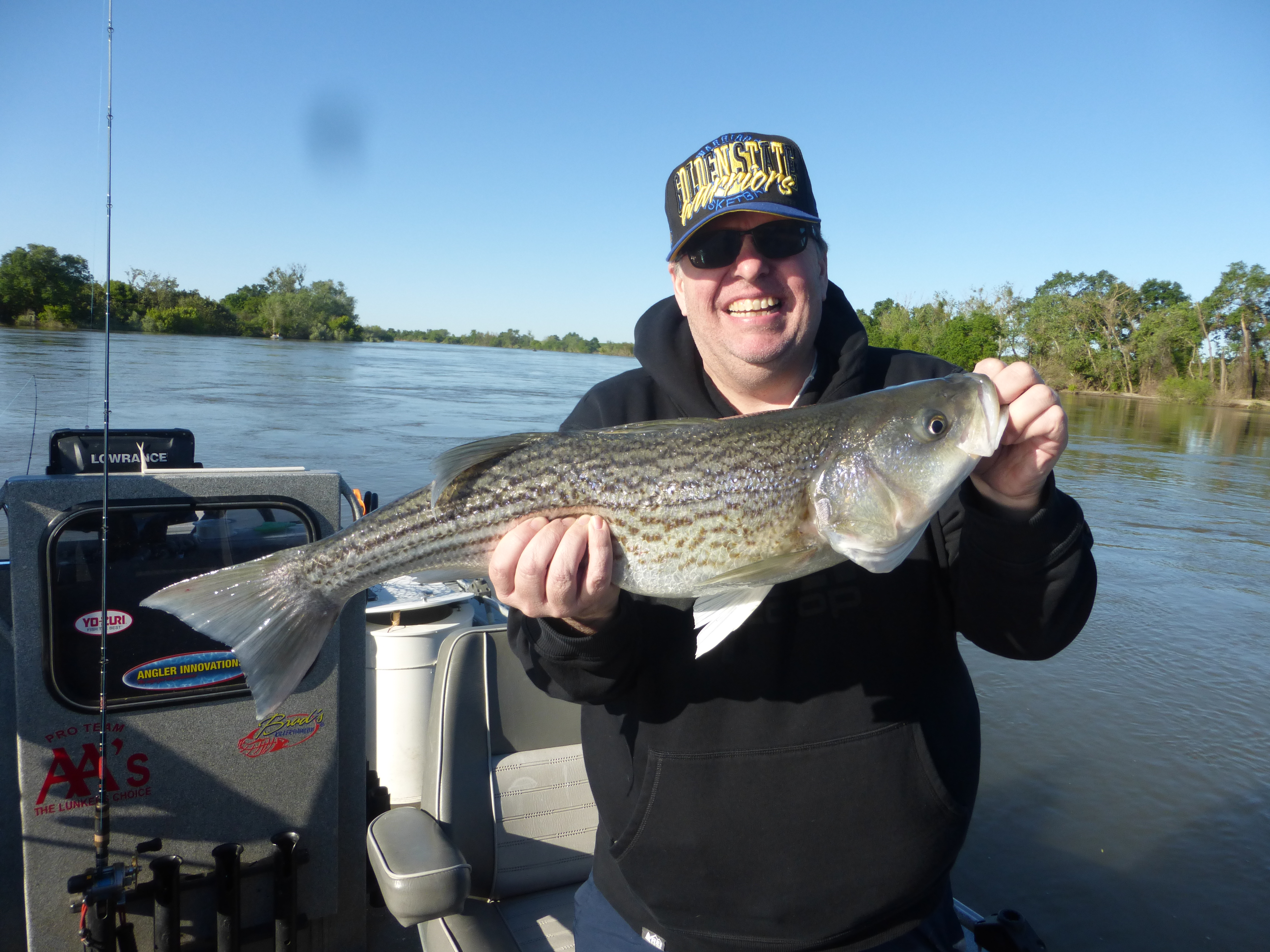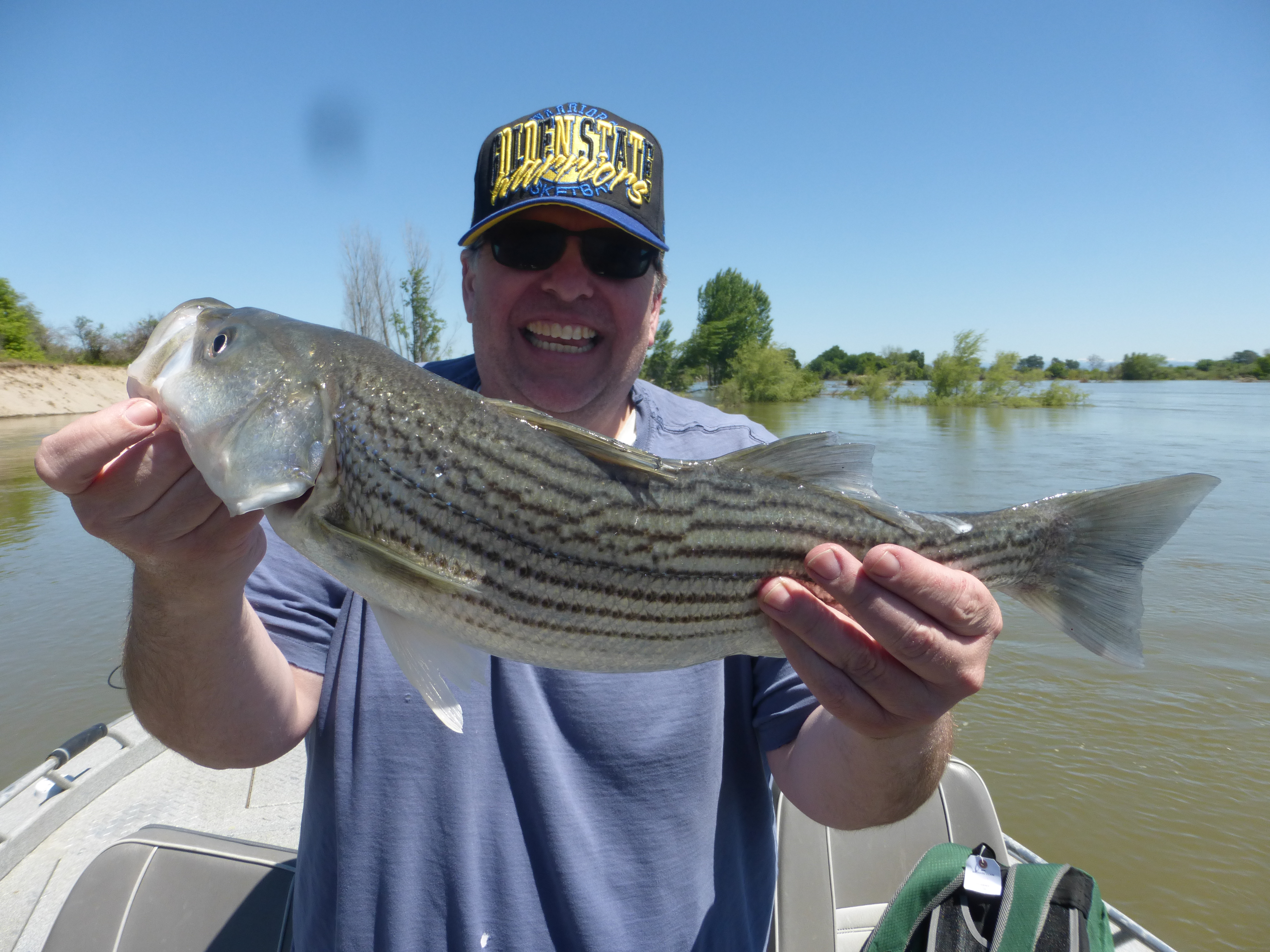Where Stripes Are Big Stars


Check out videos of this trip here.
The following appears in the June issue of California Sportsman:
By Chris Cocoles
Photos by Chris Cocoles and Mark Fong
YUBA CITY–Our day on the Feather River essentially began and ended the same way: unexpectedly reeling in fish of a lifetime.
Earlier this spring, California Sportsman correspondent Mark Fong and I rode together from the Sacramento area for a short trip north, where we figured we’d catch striped bass – lots of them. But I was certainly not counting on catching any big fish. The tempered expectations would still have us enjoying the action. I figured that would mean a consistent netting of keepers – California regulations require an 18-inch minimum length – and the four of us reaching two-fish limits without much drama.

AFTER YEARS OF DROUGHT that turned our guide Manny Saldana Jr.’s backyard river into a water-deprived mess, the Feather was more than compensated by Mother Nature as winter and spring turned biblical. Heavy rains pelted the state, and there was so much water that the heavily publicized and scrutinized spillway damage upstream at Lake Oroville prompted Saldana – who guides both salmon and striper fishing for his MSJ Fishing Guide Service – and his family to flee during mandatory evacuations in Yuba City and Marysville in March.
That crisis was quelled for now, and fishermen could at least feel comforted that the Feather was full of water. On this late April day, Saldana said the river was running at 38,000 cubic feet per second, a far cry from my last visit here for a king salmon trip (California Sportsman, December 2016) when the river was dotted with tree branches poking out of the surface.
This time, the Feather resembled more of a long lake than a drought-stricken river, and we ironically had to find calmer water than faster-running sections around Shanghai Bend Falls, a few miles from our launching point.
“We simply found a small pocket where the water wasn’t raging. I utilized my Minn Kota trolling motor for our live bait that could be eaten up by those hard-fighting stripers,” Saldana told me later.
Saldana and his part-time deckhand Justin Leonard, a young Grass Valley resident who will spend this summer working on an Alaskan fishing boat, set us up with live minnows, held firmer on our Size 1 sickle-style Maruto hooks with Bait Buttons rubber keepers.
Any massive strikes from the resident linesides would be nonchalant – a tap here, a twitch there – and likely meant fish were sampling our bait. The current and our drifting approach would make detecting the subtle strikes challenging. So as we dropped down our lines to the bottom and then cranked up a couple turns, the bites began to come frequently, and less than an hour into putting our lines in the water, we’d already hooked and lost a couple fish. But the initial pull on our Raze series Cousins Tackle rods seemed similar, and when my reel cranking created some tension, I initially anticipated a nice striper, probably a keeper and maybe even the biggest fish of the day so far. Nothing could have prepared me for what happened next.
IT WAS A NONDESCRIPT yank, but quickly the bass had me on the move – from near the bow of Saldana’s 21-foot Fish Rite to the stern in a hurry. The others on the boat became my wingmen – Fong trying to video my stressful turn at the plate; Leonard encouraging me; Saldana coaching me. The instructions were simple and calmly communicated, yet I still felt like I was at boot camp for fishing greenhorns. “Reel! Reel! Reel!” “Rod tip in the water!” “Work the line back around the motor! Don’t get it caught around it!”
I did what I could to not blow it, and with every zigzag from one side of the boat to the other, it only raised my fears of letting the big one get away. The 50-pound Yo-Zuri braid we were using was being tested. I kept waiting for that striper to tire, but this wasn’t going to be easy. I can’t remember the exact time it took to get the fish close enough to the boat so that Leonard could scoop it into the net.
My wrist was on the verge of being in pain, so at the time it felt more relief when I could loosen the reel and allow the experts to get the striper out of the net. A smiling Leonard showed me the remarkable sight of the hook just barely stuck in the side of the fish’s mouth. I wondered how we could have coaxed this bass into the boat without it wriggling free.
We put the striper in the livewell to give it a chance to recover, and measured it around 36 inches. Saldana estimated it at 25 pounds, but it may as well have been 50 as far as I was concerned. It was as awesome a conquest as I’ve ever had on the water. When Saldana and I teamed up to pose for a couple grip-and-grins, it began to hit us how special this striper was. “Fish of a lifetime” was repeated over and over again through fist pumps and bro hugs.
This was also a female striper, a hen that had traveled from the Bay Area saltwater through the San Joaquin Delta and then up the Feather to spawn. While some consider stripers an invasive pest that threaten Chinook numbers, supporters believe the drought and water allocation have done more damage to the kings than the bass, which were first introduced to this state way back in 1879. So I had no problem releasing this female back into the river.
“To continue the spawn and keep making babies,” Saldana said on a Facebook video. “How was the fight, Chris?”
“It was awesome.”
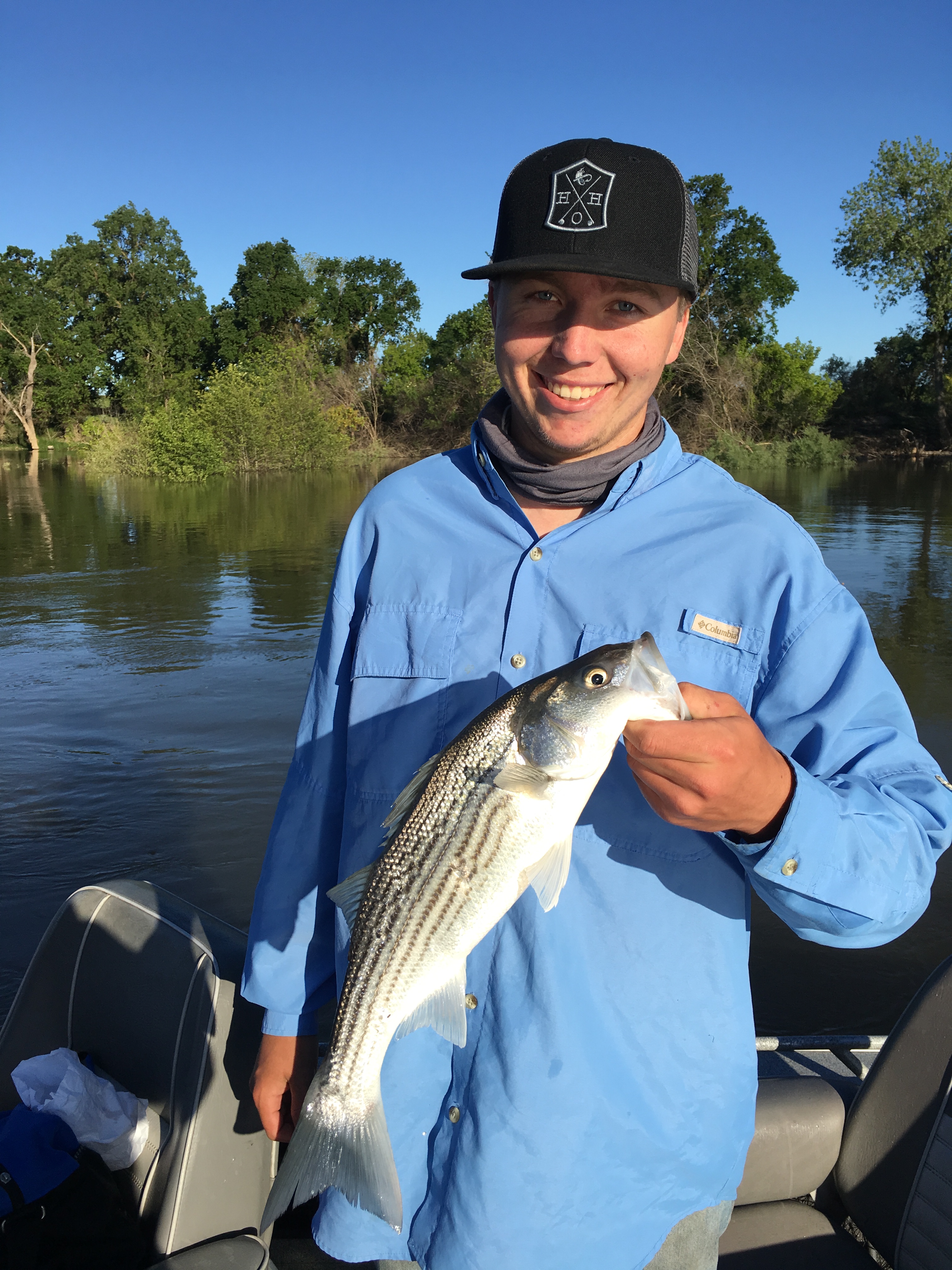

FOR THE NEXT FEW hours of boating from hole to hole, both upstream and downstream from the launch ramp, we simply fished like the script was supposed to play out. Under much-appreciated sunshine coming off that wet winter, we caught a lot of stripers. It wasn’t quite nonstop action, but just enough to keep us on our toes and allow us to recall the chaos of the earlier big one that didn’t get away. We released plenty of shakers that were too small, and methodically closed in on the limit of keepers (shouting “Fish tacos!” became our inside joke with every 18-inch-plus bass that would later be filleted).
I’d catch and release one more nice hen – about an 8-pounder – and was understandably content. But Fong, who was as excited for me as I was in the morning, had his moment in the afternoon. Fong gets to fish these waters a lot more than I do living so close to the river, but he couldn’t believe the fight he was getting from this particular striper that had swallowed another piece of live bait. It was my turn to point the iPhone on the guy who was going through his own fight.
“Oh, it’s a nice one,” Saldana said on camera. “Just play her on out.”
“Oh, baby,” added Leonard, figuring something special was happening to us again as Saldana got another trophy into his net. “Oh, my gosh.”
Fong’s hen was a little smaller but easily 20 pounds, a spawning bass that he was also happy to send back into the Feather and continue to maintain a robust striper population. We finished off a limit a while later, and back on land all agreed it was an unforgettable day.
On the ride back to Sacramento, in between Fong and I talking about college football and concerts we’d attended, the conversation ultimately swayed back to those two fish that we didn’t expect. CS
Editor’s note: Good striper fishing is expected to continue through June. For more on MSJ Guide Service or to book a striped bass or salmon trip with Saldana, check out msjguideservice.com or call (530) 301-7455. Like at facebook.com/

